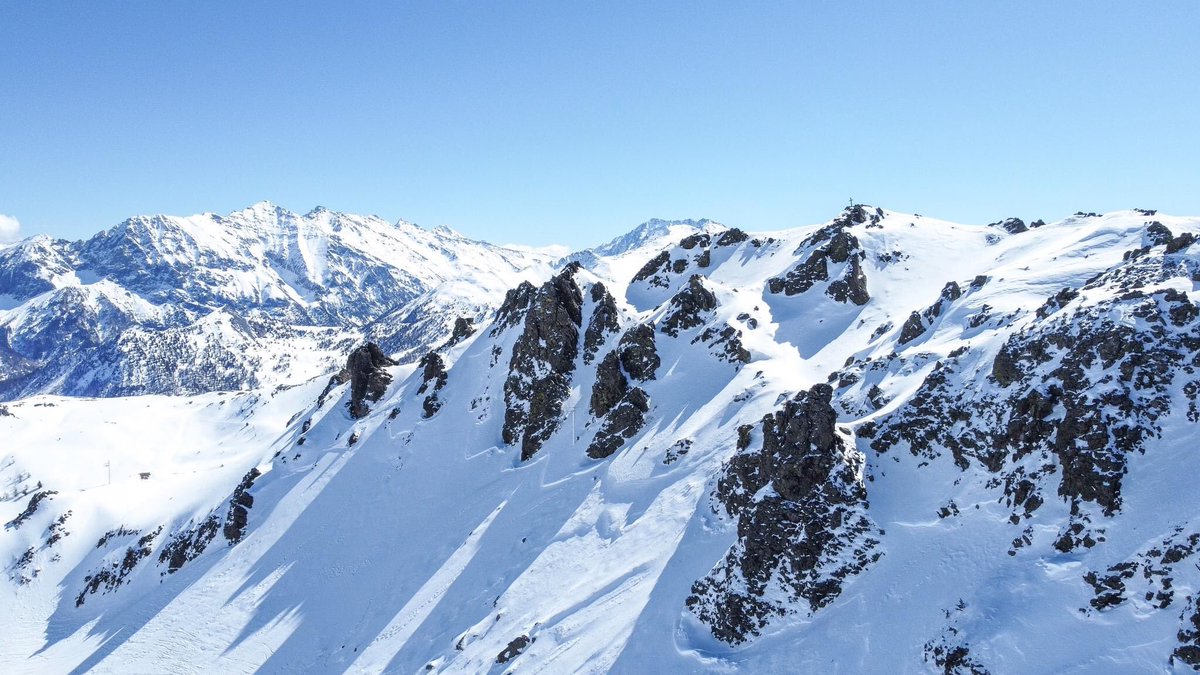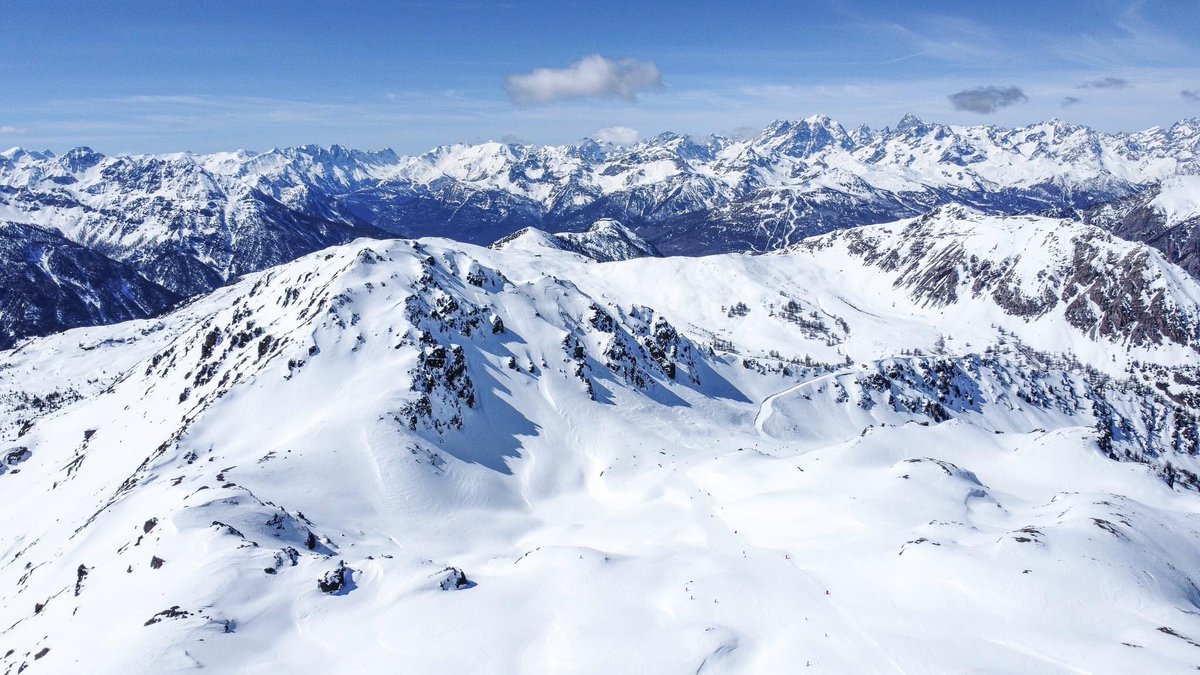Via Lattea ski area, located in the western Italian Alps, is a world-class skiing destination that offers an abundance of skiing opportunities for all levels of skiers. With over 400 km of ski slopes spanning across Italy and France, it is one of the largest ski areas in Europe and is home to some of the most challenging ski slopes in the world.
One thing that people may not know about Via Lattea ski area is that it is actually a collaboration of several different ski resorts spread across the Italian and French Alps. The ski area includes the Italian resorts of Sestriere, Sauze d’Oulx, Sansicario, Cesana and Claviere, as well as the French resort of Montgenèvre. This collaboration of resorts offers skiers a vast expanse of interconnected ski terrain, with over 400 km of slopes to explore.
Plenty to explore
One of the main attractions of Via Lattea is its varied ski terrain. The resort offers a range of skiing opportunities, from gentle beginner slopes to challenging black diamond runs that will test even the most experienced skiers.
For beginners, there are several dedicated beginner areas with gentle, well-groomed slopes where they can learn the basics of skiing. The resort also has many ski schools that offer ski lessons for beginners, with experienced instructors who are trained to help first-time skiers build their skills and confidence.
Intermediate skiers will find plenty of runs to explore, with over 200 km of blue and red runs that offer a mix of wide, groomed pistes and more challenging terrain. These runs provide a good balance of speed and difficulty, allowing intermediate skiers to push themselves while still enjoying the scenic views and smooth ski conditions.
For advanced skiers, Via Lattea has a plethora of challenging ski slopes that offer a thrilling skiing experience. As mentioned before, the resort boasts over 100 black and red runs, with some of the steepest and most challenging slopes in the Alps. Many of these runs are located in the Sestriere ski area, which has some of the most difficult runs in Via Lattea. The Olympic Kandahar and Sises runs are two examples of challenging runs in this area.

Some of the challenging ski slopes in Via Lattea include:
Olympic Kandahar: This black run was used for the men’s downhill race during the 2006 Winter Olympics and is known for its steep terrain and challenging moguls.Jafferau: This ski area offers some of the most challenging slopes in Via Lattea. It’s a great spot for advanced skiers looking for a thrill.Sises: This black run is known for its steep terrain and narrow passages, making it a challenging but exhilarating ski experience.
Additionally, Via Lattea has plenty of off-piste skiing opportunities for advanced skiers. The resort has a reputation for having some of the best off-piste skiing in the Alps, with numerous powder-filled valleys and gullies. Skiers can explore these areas either on their own or with a guide, depending on their level of experience.
Some popular off-piste skiing areas are:
Val Troncea: This area offers some fantastic off-piste skiing opportunities for advanced skiers. The terrain is varied, with plenty of powder-filled bowls and steep chutes to explore.Mt. Chaberton: This peak is the highest point in Via Lattea and offers some incredible off-piste skiing. The terrain is steep and challenging, and skiers should only attempt this area with a guide.Colle del Sestriere: This off-piste area is located in the Sestriere ski area and offers some fantastic powder skiing. The terrain is varied, with steep chutes and gullies to explore.
One of the biggest advantages of Via Lattea is its proximity to France. The ski area is located just a short distance from the French border, and skiers can easily access the nearby ski resorts of Montgenèvre and Serre Chevalier. These resorts offer a different ski experience than Via Lattea, with a more traditional French alpine feel and a focus on off-piste skiing.
While Via Lattea has many strengths, there are a few also shortcomings that are worth mentioning. The resort can get quite crowded during peak season, and lift lines can be long. Additionally, some of the ski areas are not as well-connected as others, which can make getting around the resort challenging at times.

The ski villages of Via Lattea
Via Lattea ski area is made up of several different ski resorts, each with its own unique characteristics and skiing opportunities. Here is a breakdown of each resort and what they are good for, along with some critical analysis:
Sestriere – This resort is the largest and most well-known of the Via Lattea ski area. It offers a mix of easy and intermediate slopes, as well as some challenging terrain for advanced skiers. The resort also has a vibrant après-ski scene, with plenty of bars and restaurants to choose from. However, some visitors have noted that the resort can get crowded during peak season, and the slopes can become icy and hard-packed.Sauze d’Oulx – This resort is known for its lively atmosphere and varied skiing opportunities. It has a good mix of beginner, intermediate and advanced runs, as well as some great off-piste skiing areas. The resort is also home to some great dining and nightlife options, with plenty of bars and restaurants to choose from. However, some skiers have reported that the lifts can be slow and outdated, leading to longer wait times.Sansicario – This resort is popular among intermediate and advanced skiers, with a good mix of challenging runs and off-piste areas. It also offers some great views of the surrounding mountains and valleys. However, some skiers have noted that the resort can be difficult to navigate, with a confusing layout and limited signage.Cesana – This resort is best suited for beginners and families, with a good mix of gentle, well-groomed slopes and dedicated beginner areas. The resort is also known for its relaxed atmosphere and friendly staff. However, some skiers have reported that the lifts can be slow and outdated, leading to long wait times.Claviere – This resort is located on the border with France, and is popular among intermediate and advanced skiers. It offers a good mix of challenging runs and off-piste skiing areas, as well as some great views of the surrounding mountains. However, some visitors have noted that the resort can be quite small, with limited dining and après-ski options.Montgenèvre – This French resort is located on the opposite side of the mountain from the other Via Lattea resorts, and offers a unique skiing experience with a blend of Italian and French Alpine culture. It is popular among intermediate and advanced skiers, with a good mix of challenging runs and off-piste areas. However, some skiers have reported that the lifts can be slow and crowded, leading to long wait times.
In conlucion
Overall, Via Lattea is a fantastic ski destination that offers something for everyone; a must-visit destination for anyone looking to experience world-class skiing in the stunning Italian Alps. With a variety of resorts to choose from, there is something for every skill level and skiing style, from beginner-friendly slopes to challenging off-piste runs. But skiing is just one of the many reasons to visit Via Lattea. The area also offers breathtaking scenery, charming villages, and delicious cuisine. Whether you are a first-time visitor or a seasoned skier, you will find yourself swept away by the beauty and excitement of Via Lattea. Get ready to hit the slopes and experience the thrill of skiing in one of the most stunning locations in the world!
Getting there
The Via Lattea ski area is easily accessible by both train and airplane.
If you’re traveling by train, the closest major train station is in the city of Oulx, which is approximately 10 kilometers away from the ski area. There are direct trains to Oulx from major cities in Italy, such as Turin and Milan, as well as from other European countries. Once you arrive in Oulx, you can take a bus or a taxi to reach the ski resorts in Via Lattea.
If you’re traveling by airplane, the closest airport is Turin-Caselle Airport, which is approximately 90 kilometers away from the ski area. From the airport, you can either rent a car or take a bus or a train to Oulx, and then transfer to a bus or a taxi to reach the ski resorts in Via Lattea.
Another option is to fly to Milan Malpensa Airport, which is approximately 220 kilometers away from the ski area. From the airport, you can rent a car or take a train to Oulx, and then transfer to a bus or a taxi to reach the ski resorts in Via Lattea.
No matter which mode of transportation you choose, reaching the Via Lattea ski area is relatively easy and convenient, making it a popular destination for skiers and snowboarders from around the world.